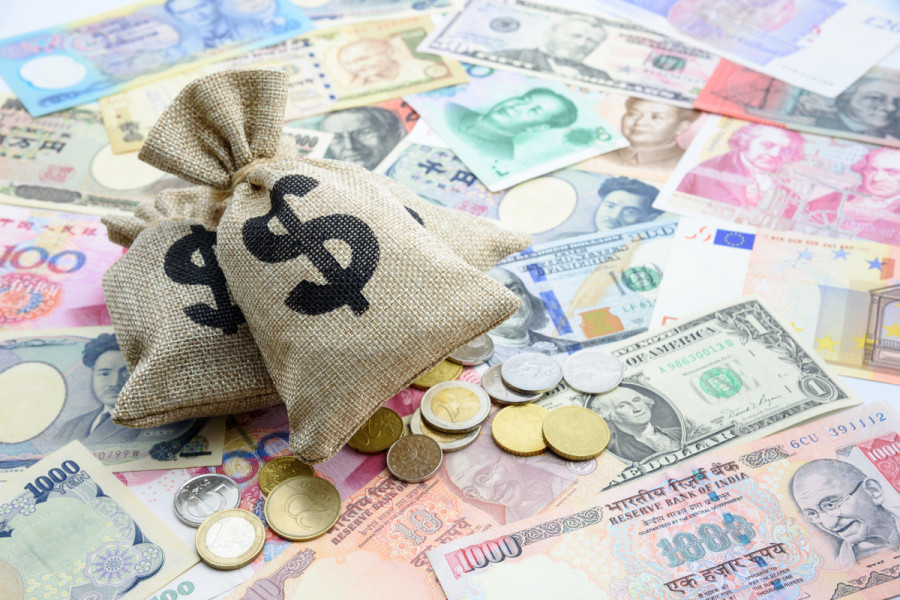Money
FDI drops 70 percent in 6 years, raising concerns over investment climate
Policy inconsistency, tax complications, weak institutional support cited as major hurdles.
Krishana Prasain
Foreign direct investment (FDI) in Nepal has declined by nearly 70 percent over the past six years, casting a shadow over the country’s ambitions to graduate to middle-income status by next year.
According to the World Investment Report 2025: International Investment in the Digital Economy, released by the United Nations Conference on Trade and Development (UNCTAD) last Thursday, Nepal’s FDI inflow dropped to $57 million in 2024, down from $185 million in 2019—a sharp fall of 69.18 percent.
The decline reflects a broader regional trend. South Asia’s total FDI inflow shrank to $34.56 billion in 2024 from $58 billion in 2019. India, the region’s largest economy, saw its FDI drop to $27.55 billion from $50.55 billion during the same period. Bangladesh and the Maldives also registered declines, while Afghanistan reported zero inflows.
However, there were exceptions. Bhutan recorded a surge in FDI, getting $100 million in 2024 compared to just $3 million in 2019. Pakistan and Sri Lanka also saw an increase in foreign investment.
Despite the recent drop in annual inflows, Nepal's total FDI stock—the cumulative value of foreign investments—rose to $8.28 billion in 2024, up from just $72 million in 2000.
The report notes that developing countries remain under pressure, with FDI inflows concentrated in a handful of locations and falling far short of levels needed to achieve the Sustainable Development Goals (SDGs).
For landlocked developing countries (LLDCs), FDI flows declined by 10 percent in 2024.
Experts say Nepal’s poor investment climate is partly to blame. While the government frequently hosts investor summits and promotional events, these efforts are undermined by weak follow-through and systemic barriers.
“There’s a lack of coordination among government agencies when it comes to large foreign investors,” said Siddhant Raj Pandey, CEO of Business Oxygen, Nepal’s first private equity fund. “Hosting events is not enough—we must show commitment by removing roadblocks.”
Pandey points to inconsistencies in tax policy and regulatory uncertainty as key deterrents. “Foreign investors often highlight Nepal’s problematic tax regime,” he said. “If we truly want to attract large-scale investments, we need a serious review of our tax structure.”
One big concern is how Nepal taxes royalties paid by multinational companies. Instead of treating these as business expenses, the government taxes them as dividends, sending what experts call a negative message to potential investors.
Pandey also stressed the need for a better-equipped judiciary. “Our courts need updated knowledge of international commercial, financial, and business law,” he said, noting that Nepal’s legal system must evolve to keep pace with modern investment disputes and standards.
FDI in Nepal is already minimal, he added, and could decline further amid rising global economic uncertainty. “To become a middle-income country by 2026, Nepal would need around $20 billion in annual foreign investment—an almost impossible target under current circumstances.”
The UNCTAD report also shows investment patterns in LLDCs. From 2020 to 2024, the energy and gas supply sector was the dominant destination for greenfield projects, attracting nearly $50 billion—more than double the investment seen in the previous period. This sector accounted for almost 30 percent of total greenfield activity in these countries.
Nepal, too, is featured among notable LLDCs, having received over $1.5 billion in greenfield project commitments. A greenfield project refers to a new investment in which operations are built from the ground up rather than acquired or repurposed.
The digital economy is also gaining traction. Greenfield investment in digital sectors has grown significantly, though mainly in a handful of countries. Around 80 percent of new projects in this space went to just 10 countries, excluding most of the Global South.
While Africa and least developed countries (LDCs) are seeing a rise in digital investment, the growth is limited by structural and regulatory barriers. In LLDCs, project sizes tend to be small, indicating a vibrant but nascent ecosystem driven by startups, small enterprises, and multinational expansions.
Despite the momentum in digital infrastructure, sectors aligned with SDGs—such as health and education—continue to receive minimal FDI. Education-related investments remain negligible in LLDCs, small island states, and LDCs.
Globally, digital investment now accounts for about 5 percent of total greenfield project value and 16 percent of the number of projects, the highest by volume. Key areas of interest include data centres, cloud computing, telecommunications infrastructure, and fintech platforms.
This surge is driven by rapid urbanisation, widespread mobile internet access, and the adoption of national digital strategies, positioning developing countries as emerging hubs for digital infrastructure and services.
Pandey noted that Nepal’s budget for the upcoming fiscal year includes policy measures to support IT and digital investment. But, he said, “implementation is what matters”.
Without translating policies into real-world action, the country risks missing out on the potential benefits of digital growth.




 9.12°C Kathmandu
9.12°C Kathmandu













%20(1).jpg&w=300&height=200)
